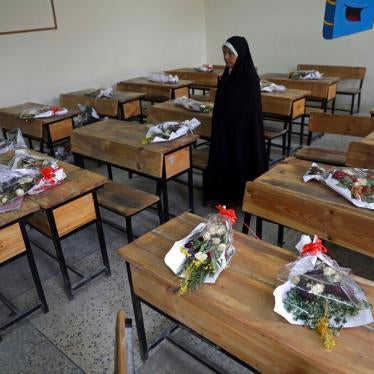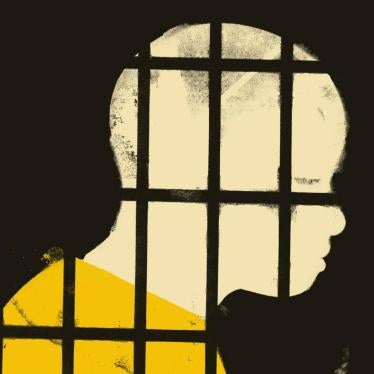As U.S. forces continue their withdrawal from Afghanistan, postmortems on the 20-year U.S.-led military intervention are underway. Predictably, many in the U.S. national security establishment are rehashing old debates about the conflict and what could have led to “victory” – more troops, looser rules of engagement, or more freedom to choose military targets. These arguments – uncannily similar to those made after the U.S. war in Vietnam – grievously devalue the devastating consequences of the war for Afghans — civilians and fighters alike.
The primary and defining characteristic of the armed conflict in Afghanistan over the last two decades has been harm to civilians caused by massive human rights abuses and war crimes by all sides. These rampant abuses have in turn fueled the cycle of conflict in numerous ways, including by inspiring recruitment to the insurgency, rendering political dialogue nearly impossible, and undermining efforts to promote stability through better governance. Successive U.S. administrations have largely perceived human rights more as an obstacle than as an essential component of addressing Afghanistan’s problems. This approach has been catastrophic.
I have spent much of these past 20 years talking to Afghans about the consequences of counterterrorism gone wrong – the civilian deaths and injuries that never made it into the Pentagon’s airstrike death count; the night raids that turned into summary executions targeting people who had the bad luck to live in a contested district; the torture of people in custody that destroyed lives and motivated revenge. I have also talked to many Afghans about the unforeseen consequences of these actions – the Taliban resurgence abetted by Afghan government abuses and corruption; the grievances and disillusionment that drove people to lose faith that post-2001 Afghanistan would be better; and the rise of the Islamic State (ISIS) in Afghanistan, an offspring of Pakistan pandering to Islamist extremism and Afghan warlords’ mis-governance in Afghanistan’s east.
The ground for what went wrong was laid early, long before the Taliban re-emerged, through squandered opportunities and the obliviousness or apathy of U.S. generals about atrocities being committed by Afghan forces, the U.S. military, and CIA units. Safe havens provided by Pakistan certainly helped pave the way for the Taliban’s return. But far too little attention has been given to what the United States did – and failed to do – in the years since 2001, and how U.S. decisions and policies essentially set the stage for failure.
Counterproductive Partnerships
Throughout, U.S. policy was guided by a number of myths. One was that the Afghan strongmen, warlords, and militia commanders the United States chose as allies in ousting the Taliban could help to provide security and stability, despite their records of abuses. In fact, the opposite proved to be the case. Persistent human rights abuses by warlords were a source of insecurity, and worse, over time, they fueled widespread resentment, undermined efforts to foster good governance at the local and national levels, and helped the Taliban obtain new support and recruits.
In late 2001, after Northern Alliance forces ousted the Taliban from the north, their militias – some led by men holding office today – carried out systematic attacks on Pashtun villages, raping women, summarily executing civilians, and stealing livestock and land. (Such attacks occurred as late as 2016, when militia forces under the former vice president, Abdul Rashid Dostum, terrorized Pashtun villages in Faryab, accusing them of supporting the Taliban.) The United States was inevitably linked to the abuses of its allies: In November 2001, Dostum’s forces massacred as many as 2,000 Taliban prisoners who were captured or had surrendered outside Kunduz. I visited the mass grave – littered with human hair and clothes – in February 2002, and later interviewed a survivor who had hidden, wounded, under a pile of bodies and escaped before the bulldozers came to bury the bodies. (The area, called Dasht-e Laili, has thousands of graves, including those of Hazara victims massacred by the Taliban in 1998, and Taliban prisoners killed by a Dostum rival in 1997). The United Nations initially refused to support a full investigation, and the United States rejected calls to protect the site. By 2006, local militias had destroyed the gravesite. But the Taliban and the families of those killed have not forgotten.
War crimes against Taliban prisoners also occurred in the south. In early 2002, former Taliban wrote to the new Afghan president, Hamid Karzai, offering to lay down arms and recognize the government. Instead, Gul Agha Sherzai, a powerful tribal leader the United States embraced, later accused of corruption, had them imprisoned and tortured by the National Directorate of Security (NDS), the intelligence agency created by the CIA in the months after the Taliban’s collapse. Others accused of Taliban links – whether true or not – also died under torture in NDS prisons or at CIA black sites. Some ended up at Guantanamo Bay. A number who were released or escaped later remobilized and helped lead the Taliban resurgence.
By 2005, Taliban forces were gaining ground and carrying out their own wave of atrocities. Suicide bombings – a new phenomenon for Afghanistan apparently adopted from the war in Iraq – emerged in 2005 with a wave of attacks targeting civilians. Human Rights Watch also documented increasing Taliban attacks on girls’ schools and assassinations of civilian officials.
At this time, another problematic U.S. ally came to prominence. Assadullah Khalid, now Minister of Defense, an important CIA contact after 2001 who was accused of sexual assault while governor of Ghazni, was named governor of Kandahar where he oversaw secret torture cells. A protegé of Khalid and Sherzai, Abdul Raziq, became head of the Kandahar border police, and later chief of police. He gained the support of NATO – who cared more about how his police could protect their forces than about Raziq’s litany of atrocities, including hundreds of enforced disappearances and torture of tribal rivals, civilians, and detainees. With high-level support by the United States and other NATO countries, Raziq escaped justice for his abuses. The Taliban killed him in 2018.
Sherzai became governor of Nangarhar, where he allied with local tribal leaders engaged in land grabbing. The infighting that followed created a vacuum exploited by militant groups from neighboring Pakistan, some of whom later proclaimed allegiance to the Islamic State in 2015. (The Islamic State of Khorasan Province, as it calls itself, has been weakened, but is believed responsible for a series of recent massacres of Hazaras, most recently targeting staff of the HALO Trust, a charity that has been clearing landmine in Afghanistan for decades, on June 9. That day, gunmen, who killed 10 and injured 17, demanded to know who among the deminers were Hazara.)
Abuses by warlords and security officials like Dostum, Sherzai, Khalid, and Raziq did not stop the Taliban from gaining ground or definitively weaken their forces. While it could be argued that the Taliban would have reemerged regardless, there is no doubt these widespread abuses provided fertile ground for new recruitment and alienated local communities caught between predatory U.S.-backed forces and the Taliban.
Civilian Casualties Undermine Public Support
As the fighting between the Taliban threatened more of Afghanistan after 2006, U.S. air operations expanded.
There’s a popular perception that except for an occasional mistake, civilian casualties from U.S. airstrikes are rare. Some civilian casualties were the result of deliberate misinformation provided by Afghan leaders to target rivals, like the December 23, 2001, airstrike that killed some 65 elders traveling to Kabul for Karzai’s inauguration. Despite evidence to the contrary, U.S. officials claimed for months the elders were al-Qaeda members. But it remains publicly unclear what led to mass civilian casualties in other strikes over the years, since the U.S. military has so often refused to release complete information about its investigations, even in cases with as many as 90 dead. For example, in Gardez in December 2003, when a US A-10 Warthog aircraft gunned down nine children in broad daylight. Or the massive sustained airstrikes in 2009, in western Farah province, that killed almost 100 civilians – mostly children – some of whom were blown into unrecognizable pieces.
Civilian deaths in Afghanistan from U.S. and NATO airstrikes jumped in 2007 and rose to over 500 in 2008. The deaths and injuries – plus poor investigations and infrequent condolence payments – caused such a public backlash that U.S. Gen. Stanley McChrystal ordered new directives to reduce civilian casualties. Numbers dropped. But after the withdrawal of most NATO forces in December 2014, the Taliban made new gains on the battlefield. The desperate effort to oust Taliban forces from Kunduz city, which briefly fell to the Taliban in late September 2015, led to the shocking U.S. gunship attack on a Médecins Sans Frontières hospital, which killed 42 patients, doctors, and other medical staff. The mistaken targeting was likely due to misinformation from Afghan government ground forces, and it cast a long shadow over U.S. claims that only insurgent forces were being targeted.
After that, civilian casualties from airstrikes soared as the Trump administration vastly increased air operations while removing directives prohibiting strikes on residential buildings and loosening rules on targeting. Between 2016 and 2020, 40 percent of all civilian casualties from U.S. and Afghan government airstrikes in Afghanistan – almost 1,600 – were children. In mid-2019, civilian casualties caused by Afghan government and U.S. forces briefly surpassed those carried out by the Taliban and Islamic State.
There is no question airstrikes significantly weakened Taliban forces (and decimated much of the Islamic State’s strongholds in Nangarhar), and no question that the Taliban’s own atrocities in urban areas increased, as Human Rights Watch documented in a 2018 report. But the psychological impact of so many civilian deaths and injuries from air operations, and the terror in rural Afghanistan inspired by the constant raids and special operations, may have done far greater damage in undermining support for the Afghan government than any military advantage gained.
Facing the Legacy of 20 Years of War
Air operations were only part of it. Today, Australia is grappling with the fallout of serious allegations about a pattern of potential war crimes its special forces committed during raids in Uruzgan province that included murdering children, kicking detainees off cliffs, and planting weapons on men whom they had summarily executed. The alleged crimes echo those of U.S. special forces, including the never-prosecuted 2012 murders of 17 civilians who were detained and tortured to death in Nerkh district. Afghan victims of such crimes never saw justice – which is why the International Criminal Court has sought an investigation into crimes by all parties to the conflict, including the U.S. military and CIA, as well as the Taliban and Afghan government forces. The U.S. response has been to reject the ICC’s jurisdiction and try to shut down any investigation.
It is also true that in these 20 years, Afghanistan saw progress in many areas. Since 2002, in cities under Afghan government control, millions of Afghan girls have gone to school and Afghan women have participated in public life, including holding political office, in greater numbers than ever before. In government-controlled areas, Afghan media play an active role in providing a forum for public debate, while also risking threats and violence from officials, security forces, government-backed militias, and increasingly the Taliban.
But these gains are fragile and limited and were achieved against a background of tremendous violence and abuse. In these 20 years, the propensity of the United States to prioritize short-term military gains over the creation of genuinely democratic institutions and the protection of human rights fatally undermined both the U.S. mission and the entire post-2001 State-building effort. Overreliance on airstrikes without adequate civilian protections, relying on abusive warlords to fill security and political leadership roles, and largely ignoring wholesale corruption and rights violations, fostered deep resentment and distrust of the U.S. and Afghan governments, grievously weakened Afghanistan’s military and political capacities, and made it far easier for the Taliban to gain ground.
As U.S. policymakers debate a new US posture toward Afghanistan, they should try to understand the true history of these last two decades and recognize that their mistakes were not in matters of troop numbers, rules of engagement, or military strategy or tactics. Instead, the mistakes were rooted in a basic failure to recognize that corruption and widespread human rights abuses – both by U.S. and Afghan government forces – sabotaged the overall enterprise. If the U.S. government does not learn from this history, it will find itself embracing policies – whether in Afghanistan now or elsewhere in the future – that repeat the same mistakes.









